The Unknown story of Spain keeping the Russians at bay
Thursday, September 22, 2022

The history of Spain has thousands of pages and for centuries the leaders together with renowned personalities have achieved all kinds of milestones that have changed the course of humanity. Besides the arrival of Christopher Columbus to what is now America being, certainly, the best known, Spain has endless stories to be told...
Given the expansion throughout the globe initiated by Columbus, Spain came to conquer and govern extensive and numerous territories. The extension of the Spanish Crown thus became one of the largest empires ever recorded. Thanks to this, the history of the country has all kinds of curiosities, among which are unknown territories by most.
 In the year that celebrates the 500th anniversary of the circumnavigation of the world by El Cano and Magallanes, many of the territories that were once Spanish come to light. In that sense, one of the great unknowns was Alaska and the occupation by Spain of this territory. Although the explorers who managed to circle the Earth for the first time did not go anywhere near Alaska, we will take a look at this page of Spain's history. In the year that celebrates the 500th anniversary of the circumnavigation of the world by El Cano and Magallanes, many of the territories that were once Spanish come to light. In that sense, one of the great unknowns was Alaska and the occupation by Spain of this territory. Although the explorers who managed to circle the Earth for the first time did not go anywhere near Alaska, we will take a look at this page of Spain's history.
After arriving on the American continent and later occupying the territories that today would be California in the 18th century, Spain began to look further north. However, for the Spanish to come to dominate this frozen territory, some attempts would be needed under the premise of trying to stop the Russian advance in nearby territories.
The Viceroyalty of New Spain extended its domains over the years from Mexico to the southern regions of the current United States after the arrival of Columbus. Thanks to the papal bull Inter Caetera from Pope Alexander VI, both Spain and Portugal were authorised by the church to extend their domains throughout the New World giving them the godly right to colonise, convert and enslave.
Alaska was undoubtedly one of the most inhospitable places on the planet. The extreme climate of the area has made its exploration impossible for centuries. Despite this, it has always had remarkable importance thanks to the fact that it is the link between America and Asia.
it was in 1774 when a maritime expedition under the command of the Mallorcan Juan Pérez arrived at the Island of Queen Charlotte. This today is the southern limit of Alaska. Juan Antonio Bucarelli, Viceroy of New Spain that year, gave detailed instructions that would allow them to reach the island and discover Nootka Bay next to Vancouver Island. Fifteen years later, Esteban José Martínez, commanding the ships Princesa and San Carlos, would also take possession of the Ensenada de Nutka, whose territory became part of the Viceroyalty of New Spain.
At that time Spain managed to dominate the area although no Russian presence was detected. This led the crown to stop the expeditions, although Esteban Martínez and Gonzalo López de Haro sailed north after discovering the Pacific coast. At that moment the Spanish crown realized that not only Russia wanted to possess Nootka but that England also wanted it.
For this reason, Carlos III tried to secure the area and commissioned Martínez to occupy the territory, dislodging any attempt at domination. At that time, the fort of San Miguel was built, which after some scuffle with English ships would generate a conflict with Great Britain.
 After years in the territory where all kinds of scientific and exploration work was carried out by Spain, tension grew with Great Britain. The indignation of the latter had grown over the years and was even on the verge of unleashing a large-scale war. After years in the territory where all kinds of scientific and exploration work was carried out by Spain, tension grew with Great Britain. The indignation of the latter had grown over the years and was even on the verge of unleashing a large-scale war.
However, a war never took place and the dispute was resolved through negotiation between Spain and England. Thus, the Spanish undertook to dismantle, after a series of concessions, the fort of Nootka while freeing maritime traffic.
Spain's stay in the area despite its rapid withdrawal was key to world history. Russia wanted to annul Spain from both California and the entire Pacific coast. Commissioner Rezanov al Czar himself even stated that this area could be part of the Russian Empire. For this reason, it is considered that Spain managed to stop the Russian expansion that more than likely if it had come to conquer the region, would have been greatly extended.
Finally, it should be noted that there are still place names in Alaska such as Valdez or Cordova after more than two centuries. The latter, moreover, places greater emphasis on the importance that Spain had in the area and for the course of history.
 1
Like
Published at 8:12 PM Comments (1)
1
Like
Published at 8:12 PM Comments (1)
How the crew members of the Magellan and Elcano expedition survived 500 years ago
Thursday, September 15, 2022
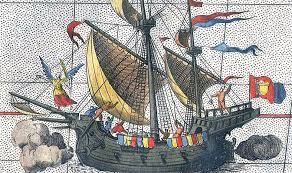 The crew of the Victoria boat were hungry, thirsty and disoriented. The crew of the Victoria boat were hungry, thirsty and disoriented.
It is September 8, 1522, and a ship docks at the Seville dock in appalling conditions.
She has just been towed down the Guadalquivir river from Sanlúcar de Barrameda, on the southern coast of Spain, where she arrived two days earlier. On board, 18 hungry, thirsty and disoriented crew members.
The ship in question is the Nao Victoria and at the head of those sailors is the Spanish Juan Sebastián Elcano. It was not their initial objective, but they have just gone down in history: they have managed to go around the world for the first time.
Anyone would imagine that the first thing those sailors did was go out and celebrate. However, far from the truth, they went, barefoot, to the church of Nuestra Señora de la Victoria and the Cathedral of Seville. They wanted to keep a promise. The promise they made during the worst moments of their journey.
Such were the hardships that these men went through that, beyond glory, simple survival was the best of prizes. They have just accomplished a feat hardly imaginable aboard a ship that, for three years, was the closest thing to a prison.
Let's travel back three years to find out what happened on those ships.
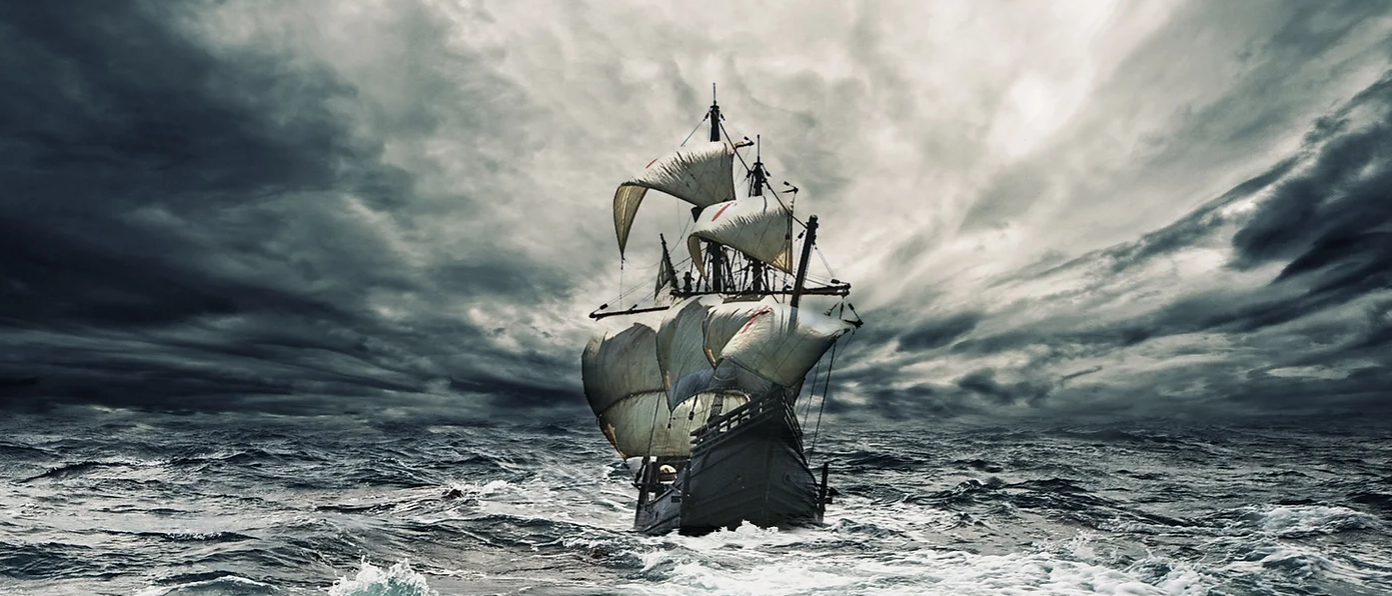
It all begins on August 10, 1519, when five ships and about 250 men, led by the Portuguese Ferdinand Magellan, set out from Seville.
On board, the ships there is food and drink for two years.
"They carry salted meat and fish, fresh vegetables, fruit, cheese, butter, bread, oil, vinegar and spices. There is also quince, although it is used almost exclusively by officers," according to Lola Higueras, former technical director of the Naval Museum of Madrid.
A varied diet that, however, lasts only a few months, since there are not enough means to preserve food and it starts to rot.
"Bread gets wormy very quickly, so they almost eat more worms than bread. It's a monstrous thing," Higueras points out.
The lack of supplies begins to take its toll and, after reaching the Pacific, the situation only worsens.
They do not know the length of this ocean and as the days go by many crew members begin to starve.
Others, in their desperation, cast their eyes to the ground looking for the only living animal that resists: rats.
"Half a ducat (the currency of that time) was paid for a rat," says historian Pablo Emilio Pérez-Mallaina.
This unpleasant food then becomes a real delicacy. And in an element of salvation as we will see later.
But the rats also run out and the expedition continues without finding land. It is then that, desperately, one last element enters the sailors' diet.
"They even eat the leather that protects the candles. They eat it by softening it in seawater and, sometimes, overheating it a little over the fire," says Higueras.
Heartbreaking hunger is not the only headache aboard these small ships. Thirst also becomes the protagonist of the conversations of these brave men.
The water also begins to rot after a few months and "imaginative solutions are sought to collect rainwater with candles", as Lola Higueras explains. But it doesn't always rain, nor is the water they collect enough for so many crew members.
Hence, some sailors can no longer resist and throw their buckets into the sea to relieve their throats with salt water. "This generates a series of tremendous cramps," says historian Carlos Martínez.
Thirsty, locked in a boat surrounded by water and unable to drink because they will probably get sick: mental torture that is repeated day after day for many extended periods of the journey.
Without water, the only drink that hydrates minimally is wine, although it is highly rationed and can cause disputes among sailors. But even this delicacy also ends up rotting.
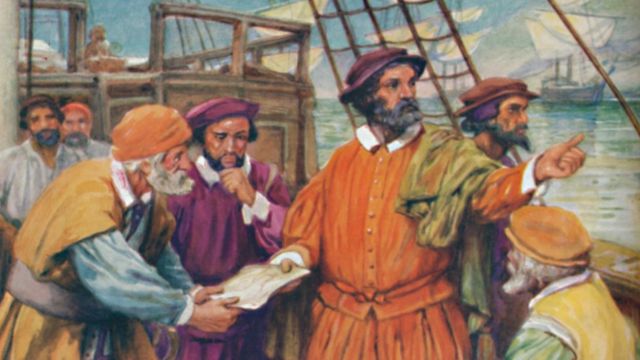
Hunger and thirst are soon joined by disease. Especially one that those sailors know well, scurvy, a terrible disorder very common in those expeditions that spend long periods without touching land.
This disease spreads among sailors due to the shortage of fresh fruit and vegetables, which causes a significant vitamin C deficiency.
"Their teeth fall out, their gums swell and the body weakness is terrible until it leads to death. But it also involves another very serious issue. The manoeuvring of the ships is based on climbing to manage the movement of the sails. A time comes when the sick can no longer climb and the ship would be left adrift", explains Lola Higueras.
Scurvy plagued crews who spent long periods without touching land. Few are spared from this disease, and the lucky ones remember then the moment when they left their scruples behind and threw themselves on the rats that were scurrying around the ship.
"They become an element of salvation because rats synthesize vitamins B and C in a special way," Higueras points out.
But the physical torture of these three years is also accompanied by the psychological. Those ships, barely 80 or 90 tons, become real "prisons" for the fewer and fewer crew members who resist.
.jpeg) They have small cellars, but, far from being a place to rest, they are used to store the ship's spare parts and the little food that lasts. They have small cellars, but, far from being a place to rest, they are used to store the ship's spare parts and the little food that lasts.
The deck is the only place for the crew, day and night, exposed to total inclement weather and unable to protect themselves.
The fire, prepared with sand and refractory bricks, is not intended to keep the sailors warm, but is reserved almost exclusively for cooking. And only when possible.
"Most of the time they cannot light the stoves on board, because with any storm, it can cause an ember to jump and burn the boat. The regulation is very strict. Candles cannot be lit near certain points. They cannot use oil lamps because they oscillate and can cause a fire. And smoking is strictly prohibited," explains Lola Higueras.

In a three-year journey, the storms are continuous and the boats are at the mercy of the waves. Death lurks at every moment and there appear the "anonymous heroes or invisible heroes".
That's what Lola Higueras calls divers. Expert sailors who, without extra oxygen and working in apnea, "manage to save artillery pieces, valuable cargo and, above all fix leaks underwater. Very complex work to do, especially in the high sea".
Heroes exposed to tremendous injuries such as ruptured eardrums, risk their lives to save those ships and, with it, the lives of their companions.
Hunger, thirst, disease, fear and countless hardships. The glory of making the first circumnavigation of the world is received by these navigators upon arrival.
But along the way, survival alone becomes the greatest of feats. Because as Lola Higueras says, this trip was "an epic one in extraordinary conditions."
 3
Like
Published at 9:51 PM Comments (0)
3
Like
Published at 9:51 PM Comments (0)
"Fish landmarks" in Seville
Thursday, September 8, 2022
The "freiduría", or fish fryer, is the street food of Seville. Food stalls have always existed, in small stores on the ground floors of buildings, where chanquetes (transparent goby), sardines, shrimp, squid etc., are all fried and wrapped in paper cones that absorb the extra oil. The arrival of international restaurant chains didn't signal their end. Indeed, the people of Seville make good use of these traditional outlets each day, especially on summer nights.
Crossing the Andalusian capital you will encounter some classics. The Inchausti family run La Moneda which is by the Arco del Postigo and offers not only fish but also "puntillitas" (molluscs no longer than 5 cm, effectively baby squid - seen below in the photo) and mantis shrimp soup (a fairly flat crustacean, with not a lot of meat, but very flavorful). Since 1904, the same family has run El Arenal, near the La Maestranza bullring. Here, the specialities are adobos (Spanish marinades) and fried cuttlefish.
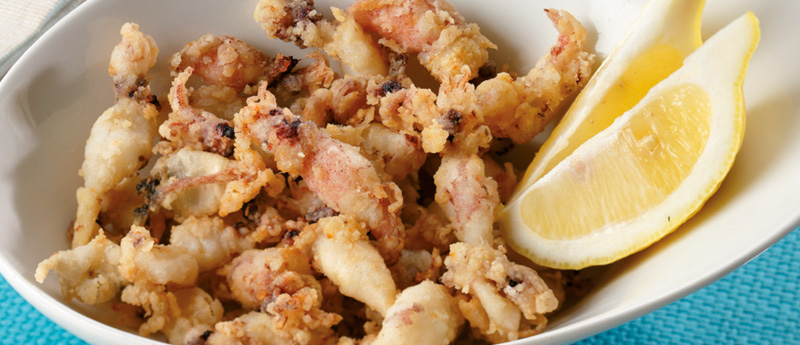
Visiting La Isla freiduría next to the cathedral we can try fried hake caviar, very popular in this Andalusian region. We should also keep in mind the breaded shrimp and the prices, which are quite reasonable compared to the rest of the establishments in the city centre.

Near the entrance to the Jewish quarter, the Puerta de la Carne freiduría is a must, founded in 1928. Fried, breaded, and boiled shrimp and cod are some of their specialities. They are open until midnight, with longer hours in the summer months.
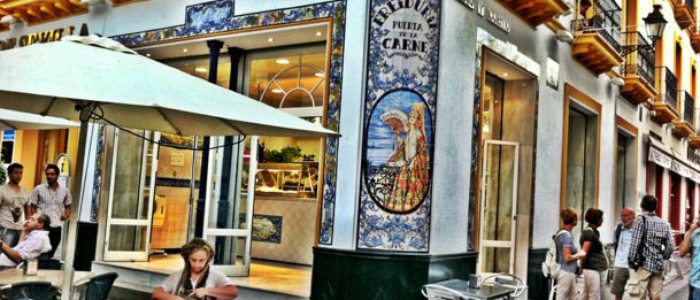
Finally in the neighbourhood of Triana, probably one of the most popular in the entire city and a meeting point for lovers of tradition and tourists alike. Crossing the Isabel II bridge (popularly known as Puente de Triana, or Triana bridge) you will reach the Freiduría Reina Victoria. The establishment's interior is reminiscent of a school cafeteria, or an association hall, but that shouldn't detract from its appeal because founded by Galician immigrants, it boasts hake, cod and calamari served by few, but very effective, waiters. Before heading back to the centre, you should also visit Alboreá, with a spacious terrace and a bar, to have some weighed cold cuts. You can't leave without trying their tortillitas de camarones (shrimp fritters), quite common in Seville but difficult to find with such good quality. Enjoy the tour!
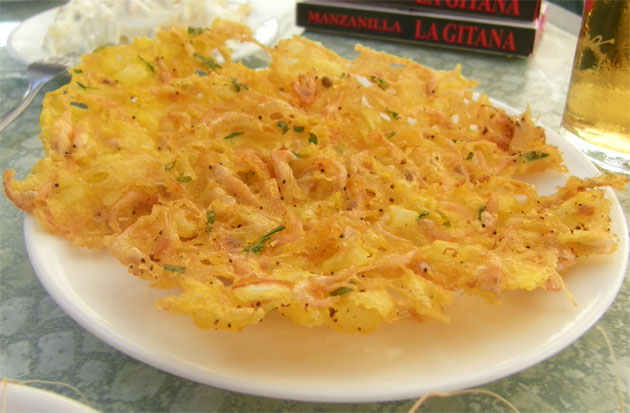
 1
Like
Published at 9:16 PM Comments (1)
1
Like
Published at 9:16 PM Comments (1)
The "City" Of Gibraltar
Thursday, September 1, 2022
More than a century has passed and there are still different ways of seeing its fall and its influence. Spain had a great empire, possibly the best that has existed since the Roman Empire and up to the present day. Possessions in half the world and a territory that reached more than twenty million square kilometers of the planet. Its loss was almost as hard as its conquests, but much of its authority is preserved, so much so that, although several territories that were colonies deny their past, history cannot hide it.
Like every conqueror who ends up falling on the opposite side, the Hispanic Monarchy had to give up territories that it had conquered years ago with blood, sweat and tears. Many others ended up becoming independent from the empire over time, and on some occasions, Spain tried to recover lost areas, but without success. As is the case with Gibraltar, which, despite being located on the Iberian Peninsula, fell into the hands of the United Kingdom more than 300 years ago.
The case of this territory, located next to the province of Cádiz, is peculiar, and although in recent years it has not led to any armed conflict, Spanish and British authorities have had their ups and downs. On August 29, the controversy came to light again after the Prime Minister of the United Kingdom, Boris Johnson, granted the status of "city" to Gibraltar, after, according to the BBC, at the beginning of the year the colony applied to be granted that recognition as part of Queen Elizabeth II's Platinum Jubilee, as did 39 other places around the world.
This status of "city" is associated with the fact of having a cathedral, university or a large population, although there are no official rules for its concession. According to EFE, historians reviewed the national archives and verified that it had already been designated as a city for the first time in 1842, during the reign of Queen Victoria, although this fact was omitted, for unknown reasons, during all these years. 180 years later, Johnson has recognized it this way again.

The 17th century had just ended when the former Spanish monarch, Carlos II, died. "The bewitched", as he was called, was the last of the House of Austria and his death generated the War of Succession to discover his heir to the throne. The war lasted twelve years, between 1701 and 1713, and left a serious dynastic conflict in Spanish territory that ended with the rise to power of Felipe V and the establishment of the Bourbon Dynasty.
While the conflict was taking place, Great Britain, one of those interested in the Spanish throne, occupied Gibraltar in 1704, taking advantage of the weakness that the Spanish empire was going through to attack this part of the Iberian Peninsula. With an attack led by George Rooke in which the British fleet attacked the enclave with 61 warships, a domain far superior to the Spanish resistance and the city fell in a few days.
The War of Succession ended with the signing of the Treaty of Utrecht on April 11, 1713, in which the British and French monarchies and other allies divided up the territories of the states of the Hispanic Monarchy. On July 10 of the same year, a second treaty was signed between the British and the Spanish, in which Gibraltar and Menorca were ceded to Great Britain.
Why did Spain recover Menorca but not Gibraltar?
From the Treaty of Utrecht, there is a clause in which "England received the fortress as a deposit, but could not deliver it to any other political power except Spain, previously negotiating with it". That was always maintained as long as the British Empire preserved its unity.
But from that very moment, the recovery of both territories was a Spanish objective. The alliance of Spain with the first French republic a few years later caused the rupture with England, already with Carlos IV in power. Menorca was under British rule for more than seventy years, fifteen under Spanish rule and another seven under French influence, until, in 1802, by the Treaty of Amiens, the island returned to Spanish hands. A luck that was not obtained with Gibraltar.
One of the attempts to recover the colony took place during The Great Siege, taking advantage of the War of Independence of the United States. But it ended with a disastrous result, and a strategy that did not work and left thousands of Spanish soldiers dead.
Previously, it had taken advantage of other occasions such as the War of the Austrian Succession (between 1739 and 1748) or the Seven Years' War, as well as later, in the Spanish-English wars before the arrival of Napoleon's troops in Spain. All ended with a vain attempt to recapture Gibraltar.
Could Gibraltar be part of Spain again?
During World War II, Franco assured that "Gibraltar is not worth even the life of a Spanish soldier", after German propaganda took advantage of the situation to bring Spain into the conflict. With those words, Winston Churchill promised that, at the end of the Great War, talks with Gibraltar would return. But the war ended, Churchill no longer ruled and the documentation was destroyed in England.
Since 1963, Gibraltar has been included in the list of territories subject to decolonization, after it was approved in 1959. Currently, there is a UN agreement in which England and Spain are asked to solve the problem. But by then, England consolidated Gibraltar as an independent state, which allowed the problem to continue to this day.
 2
Like
Published at 9:39 PM Comments (1)
2
Like
Published at 9:39 PM Comments (1)
Spam post or Abuse? Please let us know
|
|